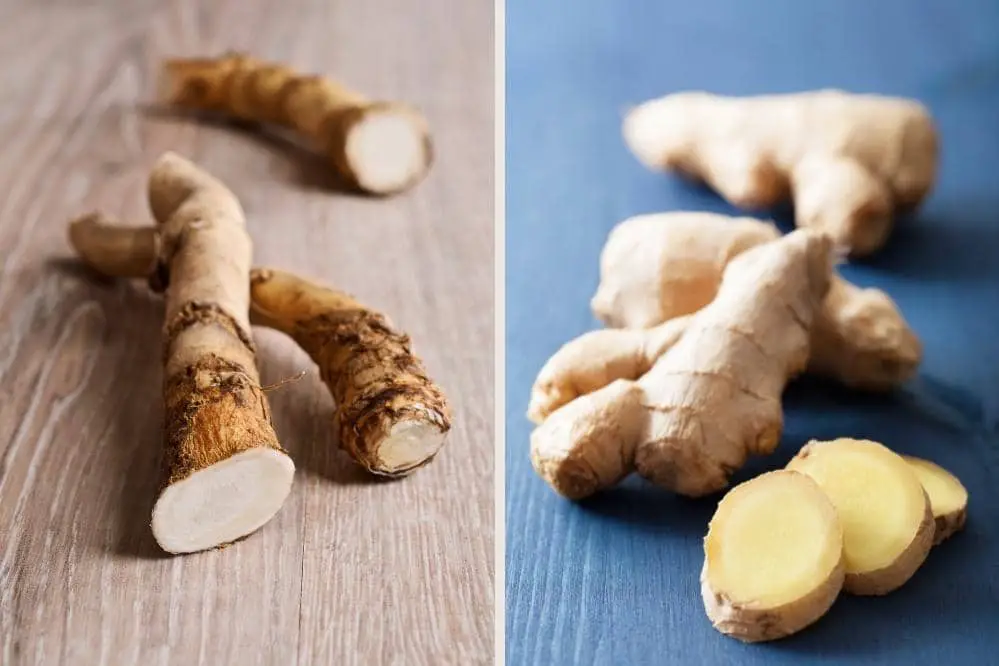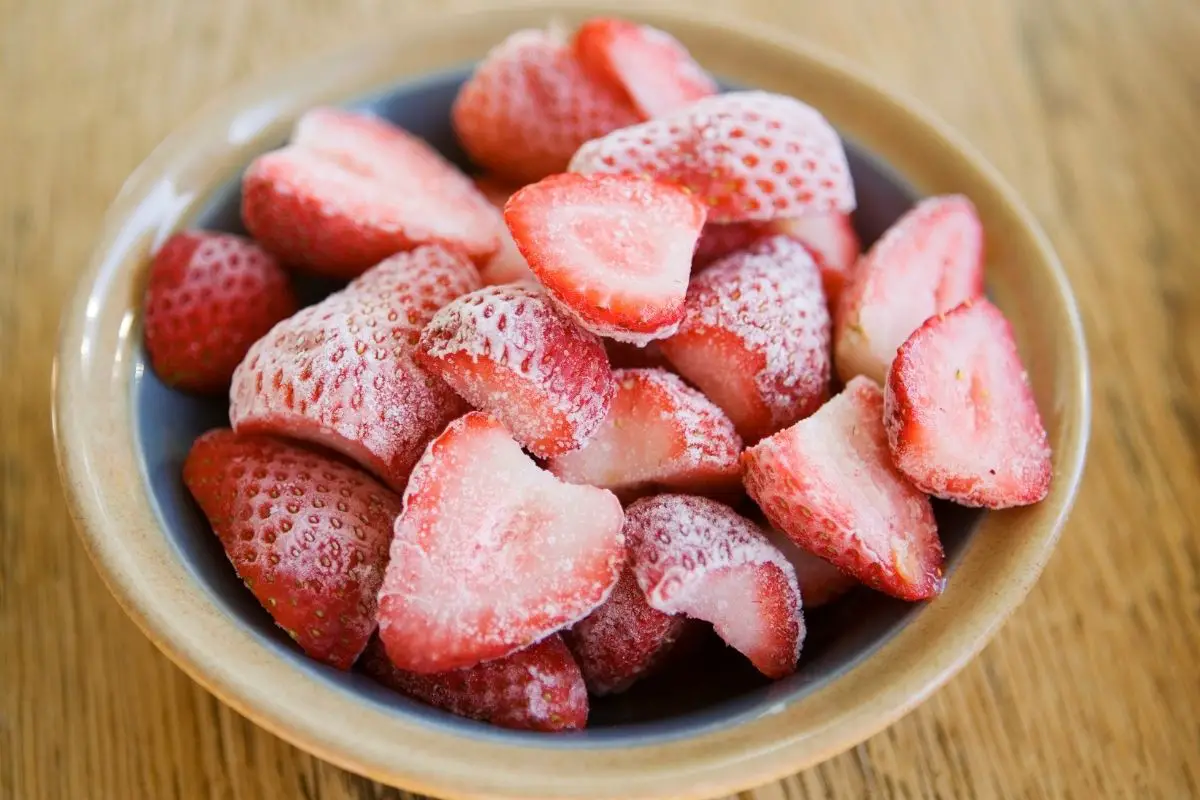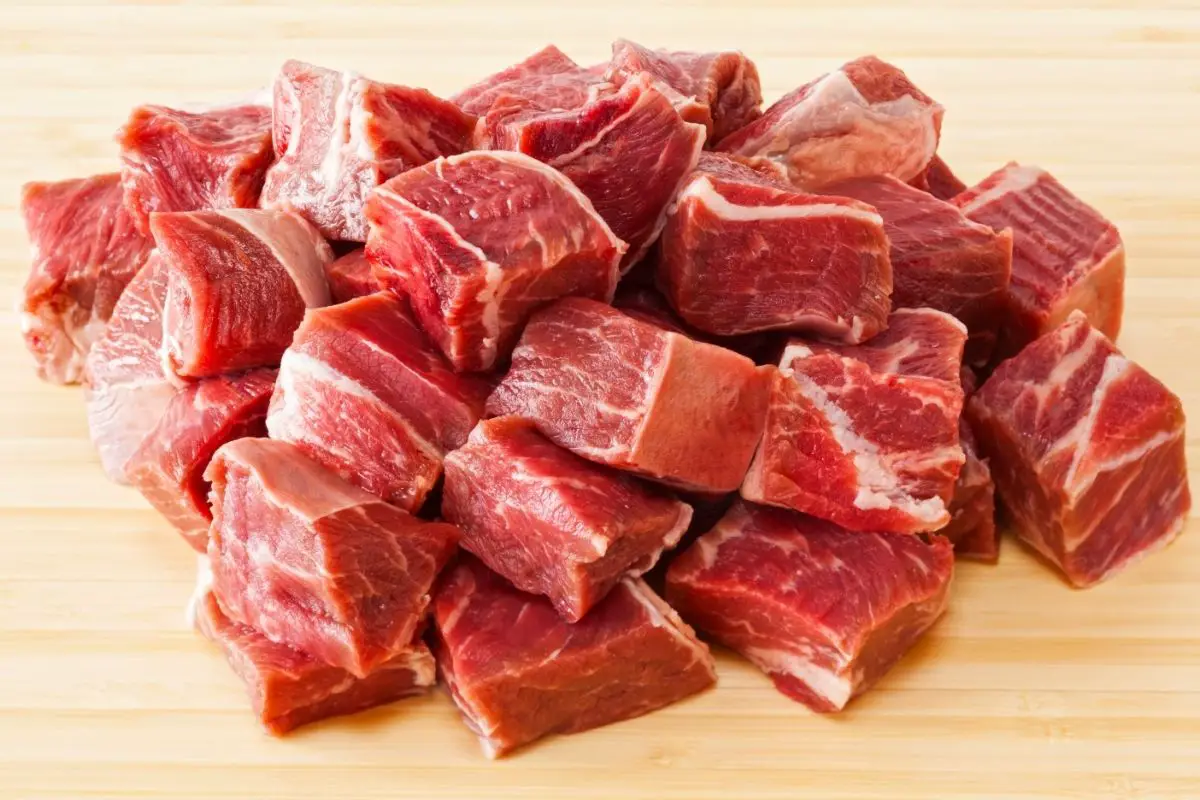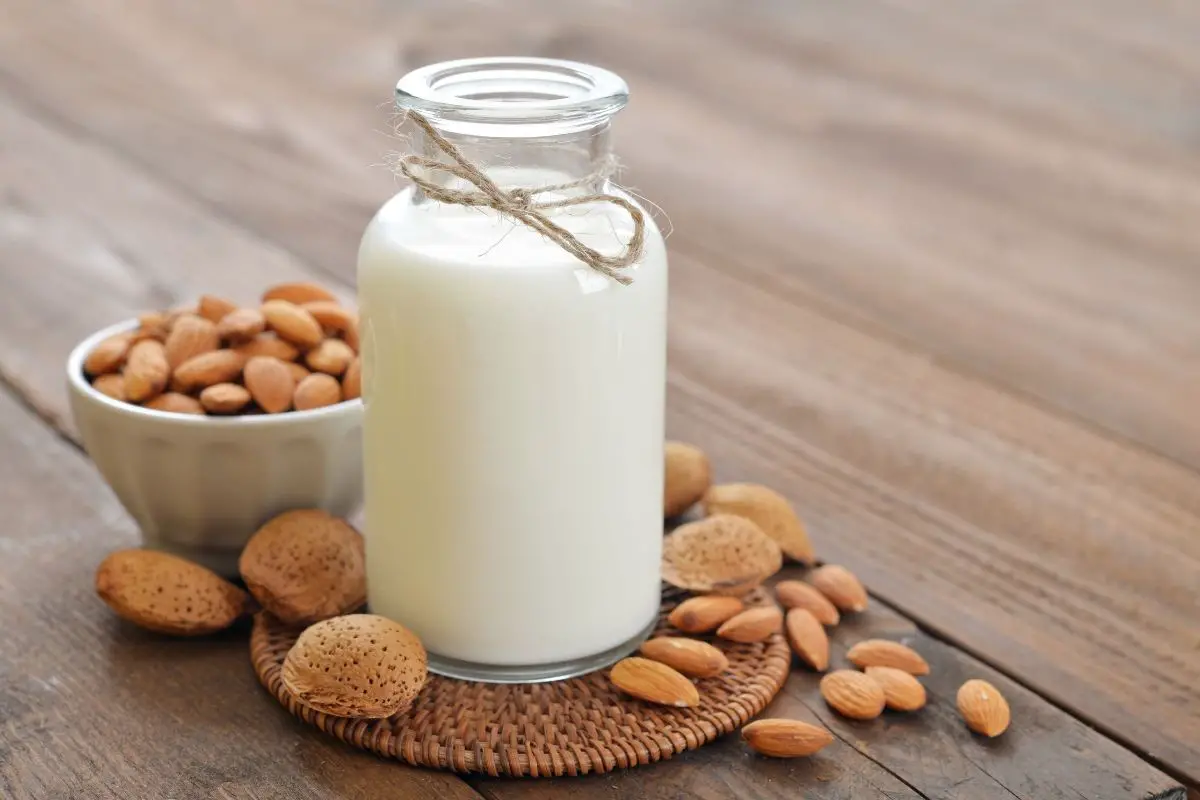Horseradish and Ginger. Two roots that can easily be confused for each other, and we all have at some point in our lives, wondered if these two roots are the same right?
It’s easy to see why these two can be confused, especially considering both have a very distinct and similar spicy taste. But in fact, these two roots are indeed quite different. Not only do they give off just enough of a different flavor to help make dishes that are that extra bit special in different ways, but the two have historically been grown in different parts of the world, and also have varied health benefits.
Here we will help you differentiate between the two, going deeper into their backgrounds, flavors and more, so you can know which one is which instantly and the benefits of them both.
Horseradish Vs Ginger
Root Vegetable

Both horseradish and ginger are classified as a root. Whereas horseradish grows with a white flower and has a long and white root, ginger grows with a yellow flower and has a short and squat brown/yellow root. They are both mostly cultivated for their roots above their floral growth, their roots being the most flavorsome and useful of the whole plant. Both horseradish and ginger leaves can both be eaten, with horseradish leaves being quite bitter and peppery, with ginger leaves being best used as a garnish.
Ginger has its historical ‘roots’ in Asia, whereas Horseradish has its origins in Europe. Horseradish is more closely related to mustard and wasabi, with ginger being related more to galangal, another Asian spicy root. So whilst these two spices are in fact roots, they are not as related as many believe!
Flavor

The flavor of these two roots has quite a bit in common. Horseradish has a very spicy flavor, with it being in a similar family to mustard and wasabi. Whether it has been freshly grated or coming in its dried form, horseradish has a very unique pungent odor and taste. Usually reserved as a condiment rather than a main ingredient in a dish, horseradish is mainly mixed in with mayo or sour cream, or mixed with vinegar, sugar and salt. Is a very popular side condiment to beef dishes.
Ginger, similar to its horseradish cousin, still has a spicy and earthy/pungent aroma, but not quite as harsh as horseradish. Used too much it can still overpower your dish and your senses. But compared to horseradish, ginger is more commonly used in its original form in cooking, not only as a condiment on the side but as a main spice inside a recipe to help add to the flavor. Popular in Asian-based recipes, as well as baking in its dried form where it’s less pungent, this root is very versatile. Great as well in hot drinks (or cold, whatever tickles your fancy), this spicy root is not limited to adding flavor to food alone!
So when it comes down to using these two roots in recipes, in theory, they can be swapped out for each other, you just won’t quite get the same flavor if you substitute. Just don’t overdo it with either!
Health Benefits
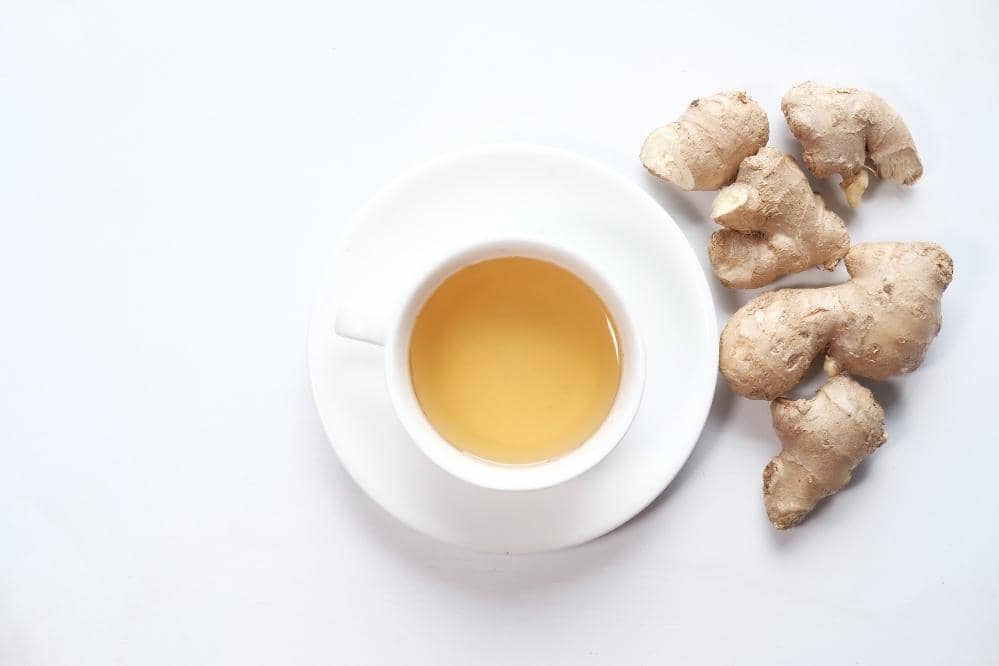
Ginger has been well known to have many benefits to our health, as is the same with horseradish to a similar degree. Some claims are more well-known than others, and studies are always being carried out on the benefits of both, and it is always best to do your research before making a big change to your diet.
Long proven by science, ginger can happily claim to not only contain anti-inflammatories to help fight against colds and other infections, but this hardy little root can also help in these areas –
- Fight against nausea, from pregnancy nausea to chemo-therapy nausea as well nausea after surgery.
- Aid in the reduction of symptoms of osteoarthritis, i.e. knee pain.
- Can help to reduce blood sugars as well as improve the risk factor of heart disease in people who have been diagnosed with type 2 diabetes.
- Can support in the fight against viruses and bacteria, potentially lowering the risk of infection.
- Ginger has been shown to help aid against stomach-related discomfort and indigestion, helping to speed up the stomach emptying itself.
- Animal studies have shown that ginger may help to improve brain functions as well as helping to protect against Alzheimer’s disease.
- Gingerol again can apparently help in protecting against cancer, though more studies are needed to confirm this.
- In some studies, ginger has demonstrated that it can help to reduce cholesterol levels in both humans and animals alike.
- Has been known to help against menstrual pain.
- Can also aid in weight loss, potentially helping to increase the number of calories burnt!
When it comes to the health benefits of horseradish, their beneficial traits aren’t quite as high as ginger, but great for our health nonetheless, the main ways this tasty little root currently can help are as follows –
- Naturally high in cancer-fighting antioxidants, early studies have shown that horseradish may help in preventing the growth of colon, lung and stomach cancer cells. However, currently, more research on humans still needs to be done to confirm these claims.
- Can also help in respiratory health, and if you have tasted horseradish, you are well aware of the burning sensation it gives at the back of the throat, affecting your nose and sinuses as well. And again early studies have shown that it may help to relieve breathing issues as well as colds, especially in its dried form.
- Contains antibacterial properties, which can help fight against bacterial as well as fungal infections!
So to put it quite simply, horseradish and ginger are not the same. It’s clear after discussing these two roots, just how different they truly are. From their historical growing roots to their flavor and to their many different health benefits, hopefully, this article can help clarify the differences between these two roots beyond their flavor similarities.
- What goes good with fried shrimp for dinner? - November 17, 2022
- Best Heat Diffusers for a Gas Stove - November 16, 2022
- Can you boil potatoes too long for mashed potatoes? - November 15, 2022

